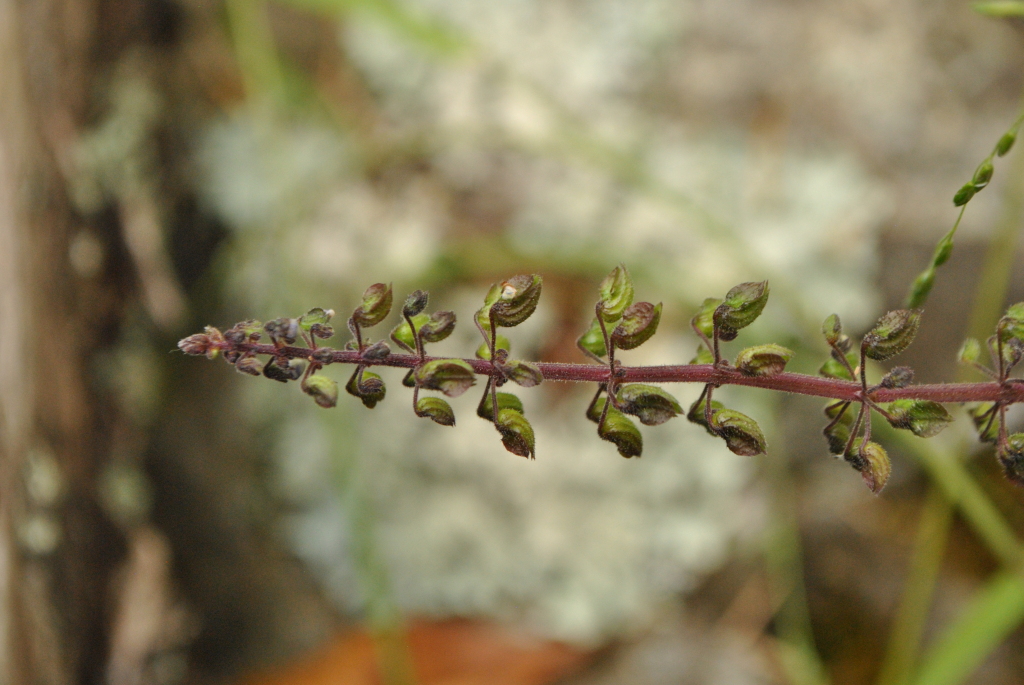Coleus australis
(R.Br.) A.J.PatonNon-aromatic shrub, 10–70 cm high, with fleshy, c. tuberous base; branches dying away after flowering, usually with moderately dense, short, glandular and longer multicelular spreading or sometimes retrorse eglandular hairs. Leaves orbicular-ovate to ovate, or to oblong-ovate, lamina 2–6.5 cm long, 2–4 cm wide, both surfaces of mature leaves usually sparsely hairy, with eglandular hairs under 1 mm long, the undersurface also with sessile, reddish glands, apex obtuse to subacute, margin crenate to crenate-dentate with 4–6(–12) pairs of teeth; petiole 0.5–5 cm long. Bracts of developing inflorescence early deciduous, ovate, 1–1.3 mm wide. Calyx at anthesis c. 1.5 mm long (4–5 mm long in fruit); corolla 6–11 mm long, the mid-lobe white to pale lilace, upper (adaxial) lobes usually darker, lobes usually with a few hairs externally and sessile glands externally, tube decurved at an angle of 110°–140°. Seed lenticular, dark brown, shining, 0.8–0.9 mm diam. Flowers throughout the year.
VVP, GipP, OtP, EGL, EGU, HSF, HFE. Also Qld, NSW. East Malesia, Polynesia.
Scattered in rainforest, riparian forests and on rocky outcrops, from Genoa area west to near Licola.
More glandular, aromatic plants, previously included in Plectranthus parviflorus have been tentatively assigned to C. graveolens. See notes under that species.
Conn, B.J. (1999). Lamiaceae. In: Walsh, N.G.; Entwisle, T.J., Flora of Victoria Vol. 4, Cornaceae to Asteraceae, pp. 418–459. Inkata Press, Melbourne.
 Spinning
Spinning